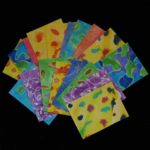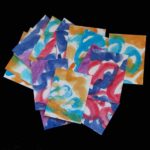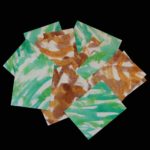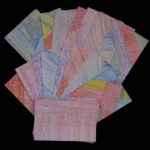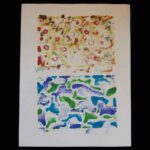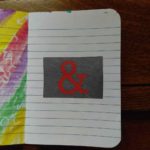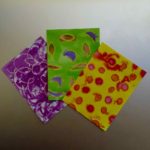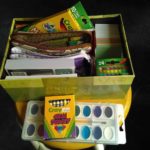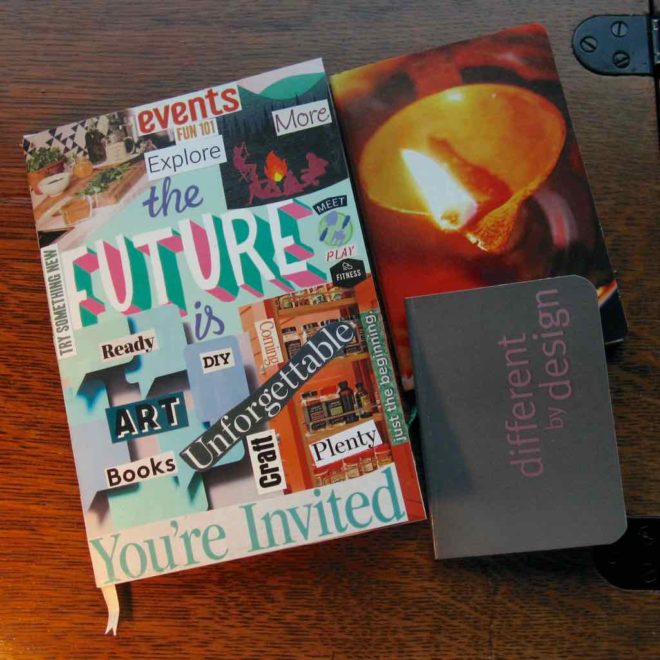An oracle deck is a set of cards with a symbolic meaning or message attached to each, with no limitations as to structure or design – essentially, a generalization of Tarot cards. You will find plenty of oracle decks where each card depicts an animal, and the meanings are what that animal might teach us about our own lives; decks exist with all kinds of themes: trees, goddesses, crystals, angels, dragons, flowers, and plenty more. You will also find oracle decks where each card is a scene or illustrated abstract concept, and the meanings are about the represented state of being, or what the universe is telling you through the card.
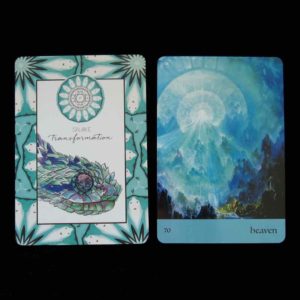 There is a dizzying array available – if you run out of options in the bookstores, check Etsy. You can also buy decks of affirmation cards, inspiration cards, insight cards, and blessing cards, the extended family of oracle cards.
There is a dizzying array available – if you run out of options in the bookstores, check Etsy. You can also buy decks of affirmation cards, inspiration cards, insight cards, and blessing cards, the extended family of oracle cards.
In June, I started the habit of drawing an oracle card each evening, reading its description in the book that generally comes with the deck, and thinking about it while going through a basic stretching routine. Sometimes that leads to a journal entry or an addition to my mini art journal; more often it does not, but even the least-applicable card gives me enough to think about that I stretch a bit longer than I would otherwise.
You can, of course, use oracle cards as journal prompts explicitly. Draw a card, and answer any or all of these questions:
- Before you read the description, what does the card make you think of?
- How well does the description correspond to the card? Where do you see the two especially well matched or especially discordant from each other?
- Where could the message of the card apply to your life? How can you maneuver it into fitting some aspect of your life, if it doesn’t seem to as written?
- In your life, is there an abundance of or a need for the elements outlined in the card? If the message is one of advice or divination, can you argue both in support of the message and against the message?
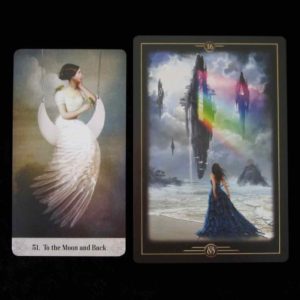 For a few weeks after getting into using oracle cards, I came up with a flood of card and deck ideas of my own. For a while I thought “This is my medium!” It slowed, though, and completing a good oracle deck is a lot of work – a lot of cards must be chosen and designed, and the descriptions must be drafted and reworked. However, you can make test cards or simple decks really quickly and easily. (And I am still working toward some completed oracle decks of my own.)
For a few weeks after getting into using oracle cards, I came up with a flood of card and deck ideas of my own. For a while I thought “This is my medium!” It slowed, though, and completing a good oracle deck is a lot of work – a lot of cards must be chosen and designed, and the descriptions must be drafted and reworked. However, you can make test cards or simple decks really quickly and easily. (And I am still working toward some completed oracle decks of my own.)
The easiest way to make your own cards is with blank index cards. You can use 4″ x 6″ cards for a large deck (though with index cards this size feels a little flimsy), cut the cards down – I’ve cut them into halves, quarters, even eighths! – or use cards that are already smaller. 3″ x 5″ index cards would be a reasonable size for a deck of oracle cards. Decorate one side of the cards to be the back – the techniques I listed for simple art journaling could all apply here. Typically you would want the backs to all match, but for test cards I have only been making them match thematically. I have a set that are (almost) all watercolor crayon resist, and a set that are all just filled in with colored pencil, and two sets that are watercolor-only. If you’re cutting apart large index cards, you can decorate a lot of backs in a short amount of time.
If you paint, the paper will probably get a little bumpy. Let it dry for 24 hours and then iron it, no steam, with a piece of blank paper between the paint and the iron. I found that even 24 hours later there was still a good amount of wet paint hiding in there to come off on the paper! I’m going to reuse my pressing sheets until I think of some way to use them as art in their own right.
So far I have handwritten the fronts of the cards, but my printer can print onto 4″ x 6″ paper, so I’ve got the option to print them. I have ideas for sturdier cards once my decks are more finished – the heaviest cardstock my printer can manage, and then cut it down into cards. I believe you could get 4 “full-sized” cards out of one sheet of letter-sized cardstock, or 6 small-but-not-mini cards (oracle decks are usually significantly larger than playing cards, but not always and it’s certainly not a requirement). I even have corner-rounding punches to make them nice and fancy. That process is a good while in the future, though!
Decks shown in photos:
First photo, left: Animal Kin Oracle by Sarah Wilder
First photo, right: Journey of Love Oracle, by Alana Fairchild (card meanings), Rassouli (card art), and Richard Cohn (poetry included in guidebook)
Second photo, left: Oracle of Mystical Moments, by Catrin Well-Stein
Second photo, right: Oracle of Visions, by Ciro Marchetti
